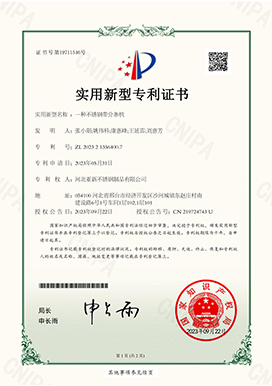- Phone:+86-17331948172 +86-0319-8862898
- E-mail: inquiry@puxingclamp.com
Dec . 25, 2024 12:23 Back to list
stainless steel spring hose clamps
Understanding Stainless Steel Spring Hose Clamps A Comprehensive Guide
Stainless steel spring hose clamps are essential fastening devices used in various applications to secure hoses in place. They provide a reliable and effective solution for preventing leaks and ensuring that hoses remain firmly attached to fittings. In this article, we will explore the characteristics, benefits, applications, and installation techniques of stainless steel spring hose clamps.
What Are Stainless Steel Spring Hose Clamps?
Stainless steel spring hose clamps are designed with a spring mechanism that allows them to maintain a constant tension on the hose as it expands or contracts due to temperature fluctuations or pressure changes. They are typically made from high-quality stainless steel, which makes them resistant to corrosion and suitable for use in harsh environments. This durability is especially valuable in industries like automotive, plumbing, and marine applications.
Characteristics of Stainless Steel Spring Hose Clamps
1. Material Composition Made from stainless steel, these clamps are known for their strength and resistance to rust and corrosion. This is crucial when they are exposed to moisture or chemicals.
2. Design The unique spring design allows for automatic adjustment. Unlike traditional hose clamps that need to be manually tightened, spring clamps provide consistent pressure on the hose without the risk of over-tightening.
3. Versatility Available in various sizes and designs, stainless steel spring hose clamps can accommodate different hose diameters and types, making them suitable for a wide range of applications.
4. Temperature Resistance Stainless steel springs can withstand high temperatures, making them ideal for automotive applications where engine heat can affect hose integrity.
Benefits of Using Stainless Steel Spring Hose Clamps
1. Reliability These clamps provide a secure and consistent grip on hoses, reducing the risk of leaks and ensuring safety in high-pressure systems.
2. Ease of Installation One of the standout features of spring clamps is their straightforward installation process. There is no need for complicated tools; simply slide it over the hose and ensure it's placed correctly.
3. Maintenance-Free Due to their self-adjusting nature, these clamps require minimal maintenance, giving users peace of mind.
stainless steel spring hose clamps

5. Wide Range of Applications From automotive and marine to HVAC and industrial machinery, these clamps are used across numerous industries, proving their versatility.
Applications of Stainless Steel Spring Hose Clamps
Stainless steel spring hose clamps can be found in various sectors, including
- Automotive Used to secure coolant and fuel hoses, ensuring a leak-free operation even under extreme conditions. - Marine Ideal for securing hoses in boats where exposure to saltwater can cause corrosion in standard clamps.
- Plumbing In residential and industrial plumbing systems, these clamps are used to connect hoses and pipes.
- HVAC Essential in heating, ventilation, and air conditioning systems, maintaining secure connections for refrigerant lines and ducts.
- Food Processing Compliant with sanitary regulations, these clamps secure hoses used in food and beverage production, preventing contamination.
Installation Tips for Stainless Steel Spring Hose Clamps
1. Choose the Right Size Ensure that the clamp is the appropriate size for the hose to create a secure connection.
2. Inspect the Hose Before installation, check the hose for any signs of wear or damage, as this can impact the effectiveness of the clamp.
3. Ensure Proper Placement Position the clamp at the hose’s base, as close to the fitting as possible, to maximize grip and minimize the risk of hose slippage.
4. Check Tension After installation, ensure that the spring clamp is holding the hose securely. If the clamp is too loose, it may not provide the needed pressure to prevent leaks.
In conclusion, stainless steel spring hose clamps offer a reliable, durable solution for securing hoses in various applications. Their ease of use, coupled with their robust materials, makes them an ideal choice for professionals and DIY enthusiasts alike. By understanding their benefits and applications, users can make informed decisions when selecting the right hose clamps for their specific needs.
-
Large Stainless Steel Adjustable American Type Hose Clamp-Hebei Pux Alloy Technology Co., Ltd.|Corrosion Resistance,High Torque
NewsAug.17,2025
-
Large Stainless Steel Adjustable American Type Hose Clamp - Hebei Pux Alloy Technology Co., Ltd | Corrosion Resistant High Torque Adjustable
NewsAug.17,2025
-
Large Stainless Steel Adjustable American Type Hose Clamp - Hebei Pux Alloy Technology Co., Ltd.
NewsAug.17,2025
-
Durable Stainless Steel Hose Clips & Clamps for Secure Fittings
NewsAug.17,2025
-
Large Stainless Steel Adjustable American Type Hose Clamp - Hebei Pux Alloy Technology Co., Ltd
NewsAug.17,2025
-
Large Stainless Steel Adjustable American Type Hose Clamp - Hebei Pux Alloy Technology Co., Ltd
NewsAug.16,2025




